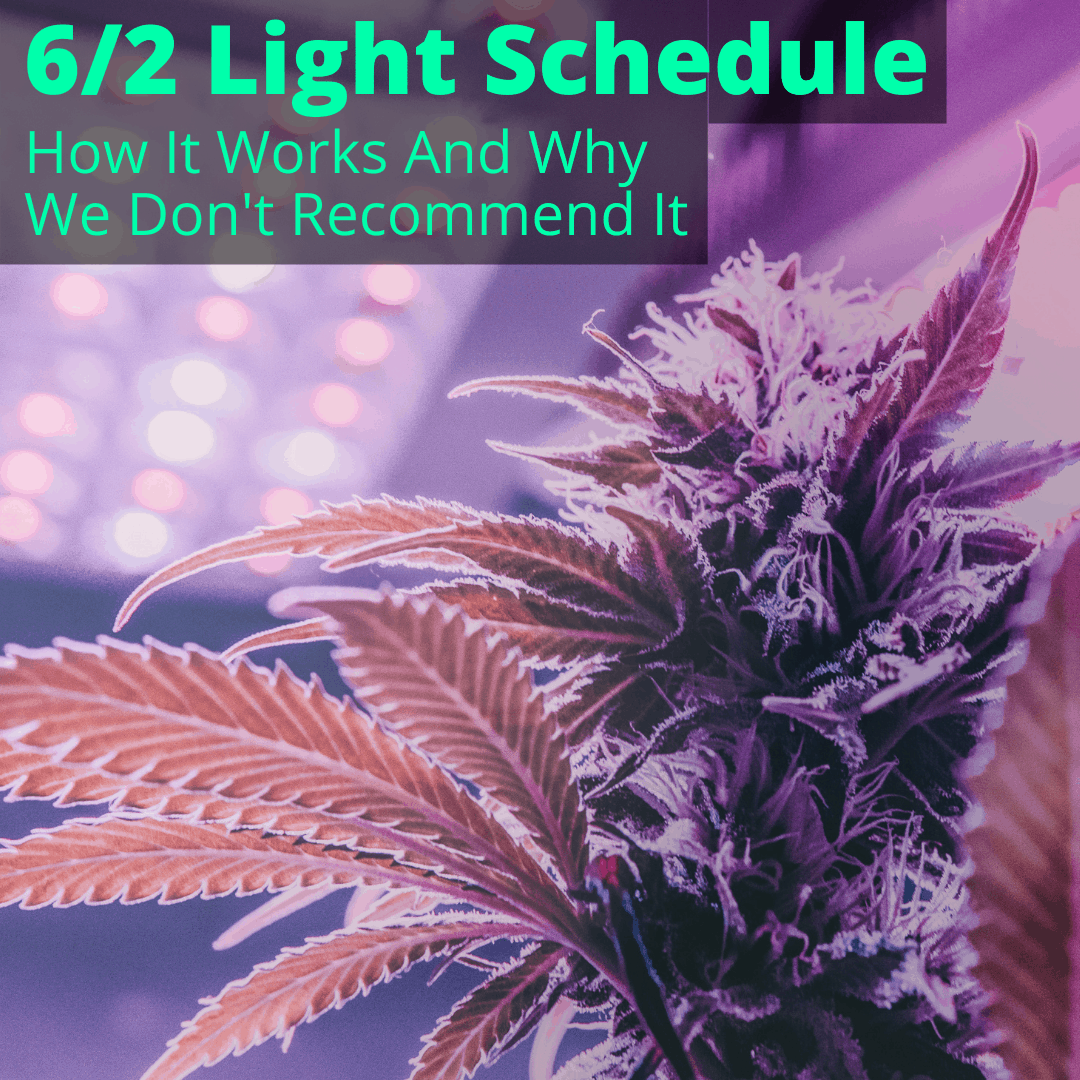
And that means sticking to tried-and-true methods.
Weed that is growing outdoors enjoys long periods of daylight during vegging and around 12 hours of daylight and 12 hours of darkness during flowering.
That is why indoor growers provide 18 hours of daytime during vegging and then switch to 12 hours to induce flowering.
It works.
So obviously, we’re skeptical when presented with the completely different 6/2 light schedule. But we’re always willing to keep an open mind, so let’s take a closer look.
6/2 Light Schedule
A 6/2 light schedule means keeping your lights on for 6 hours at a time, then turning them off for 2 hours. You do this three times a day. This schedule is for vegging (or seedlings), but obviously not for flowering, which requires 12 hours of continuous darkness.
In terms of total amount of light, it is the same as the standard 18/6 vegging schedule (18 hours of light, followed by 6 hours of darkness). The light and darkness periods are simply broken up into 3 smaller chunks.
Breaking the periods of light and darkness up like that has several advantages, though most seem to be anecdotal only. It also has some potential disadvantages.
We’ll cover them next, but overall, we conclude that you’re better off just sticking to one of the regular time schedules, like 18/6, 20/4, or leaving grow lights on 24 hours.
Advantages Of A 6-2 Lighting Schedule
Below are the three most commonly cited benefits of a 6/2 lighting schedule. Only the last one is a proven benefit, and it is one that most growers won’t really need. The other two might help a bit, but probably won’t make much of a difference to your grow overall.
Gives Plants A Rest Period
The advantage most often cited for the 6-2 schedule concerns the amount of light plants can process per day. Once a plant has reached its daily limit, it can no longer absorb any light and continuing to give it light after that point is simply a waste of resources.
Providing 2 hours of darkness after 6 hours of continuous lighting gives the plant a chance to rest and process the light it received during those six hours. When the next 6 hours of light begin, the plant is ready to process more light. In this way, you maximize growth throughout the day.
This sounds like a compelling argument, and it very well may be, but we have not found any proof of this whatsoever. In fact, we have not seen any reports of growers having issues with 18 hours of light being too long. Many even provide light 24/7 during vegging and it does not seem to have any negative effects.
Prevents Light Stress
This is another unproven advantage. After 18 hours (or more) of continuous light exposure, marijuana plants can start to show signs of stress. These include droopy leaves or leaves that curl upward and they appear near the end of the light cycle.
If you only have the grow lights on for 6 hours at a time, these symptoms of stress do not appear. It strands to reason that shorter periods of continuous light are less stressful on the plants. What is not sure is whether a little stress actually has any negative effect on the plants. Every indication is that it does not.
Gives Your Grow Tent A Chance To Cool Down
If you are having trouble keeping your grow tent cool, a 6/2 lighting schedule might be beneficial. By breaking up the 18 hours of running your lights, and giving them 2 hour breaks every 6 hours, you also give your tent 2 hours to cool down.
This means you won’t need quite as much air conditioning, ventilation, etc. You also won’t have to run those systems for 18 hours straight, which put less stress on your fans and other equipment.
Disadvantages Of A 6-2 Schedule
The primary disadvantages of this lighting schedule are increased complexity and more stress on your plants when you switch from this 6/2 vegging schedule to the flowering schedule.
More Complicated
Having your lights come on and turn off 6 times a day is more complicated than doing it only twice a day. In fact, many timers are only able to turn them on and off once per day. Even the best timer for grow lights is unlikely to have this function. Few timers would even be able to handle a 6/2 schedule.
This means you would have to get a timer that can turn the lights off and on multiple times throughout a single day. You would also have to set up everything correctly so that the lights come on and turn off when they should.
And you’ll definitely need a timer—don’t even think of running this schedule while manually turning your lights on and off.
Naturally, you may want to program your cooling equipment to run concurrently with the lights. Or to increase in output when the lights are on and run at a lower setting when they are off.
Stress When Switching To Flowering Schedule
Switching from vegging to flowering is a bit unusual with a 6/2 schedule, because the length of time the lights are on continuously increases, instead of decreasing as it usually does.
If you use the standard 18/6 lighting schedule (or 20/4 or 24/0), the daylight period gets shorter when you switch to the 12/12 flowering schedule. But when you switch from a 6/2 schedule to bloom, the continuous daylight period actually gets longer, doubling from 6 hours to 12.
Like most of the benefits of this lighting schedule listed above, this drawback is also not proven. There are simply reports from growers who have seen their plants take much more time to adjust to the bloom schedule and to enter the flowering phase of growth.
Most likely, this will not cause a huge impact, but it is worth taking into account, if you are considering the 6/2 daytime breakdown.
One thing you could do to minimize any effects is to first change to a 10/2 cycle toward the end of vegging, before flipping all the way to the bloom schedule.
This will help ease the transition and has the added benefit of giving your plants an additional 2 hours per day of daylight at a time when growth is really taking off. This means they will start growing buds sooner.
Is It Worth Trying?
This is the big question. Is it worth trying the 6/2 vegging timetable? If you’ve read much of this site, you know we generally advocate keeping your marijuana grow simple. As simple as possible.
Thus, it should come as no surprise that we don’t recommend trying the 6/2 schedule. The possible benefits aren’t huge, most of the benefits are anecdotal only and have not been proven, and it’s going to be more work for you. Just stick with the 18/6 timetable that is easier to implement and has been proven to work well.
It is additionally worth remembering that plants in nature also live by the 18/6 (or a similar) schedule. They get their daylight in one continuous period, not broken up into 3. Plants have evolved to work with that, making the natural light cycle the ideal time to run your grow lights.
All that said, using the 6/2 schedule is unlikely to have any major negative effects and it could possibly result in some faster growth. If you’re curious and don’t mind the extra work of getting it set up and ensuring it is running properly, there is no real harm in trying.
In fact, since there are a lot of questions online about the 6/2, but there are very few actual grower reports, you could document your results and help a lot of people.
What is really needed is a direct comparison growing the same plants under the same conditions in parallel, with only the light schedule being different. That could answer the question once and for all, which one works better.
6/2 Cannabis Lighting Schedule: Final Thoughts
Running your grow lights for 6 hours at a time, followed by 2 hours of darkness, is intriguing. No doubt about that.But overall, we don’t feel it is worth actually trying, unless you have the spare time and capacity to do it.
If you’re just trying to get a grow going and get a good yield, there’s already enough to worry about. Why complicate matters further for what will, at best, result in slightly faster veg growth? Follow a simple light schedule, like the one laid out in our article on how long to leave grow lights on.
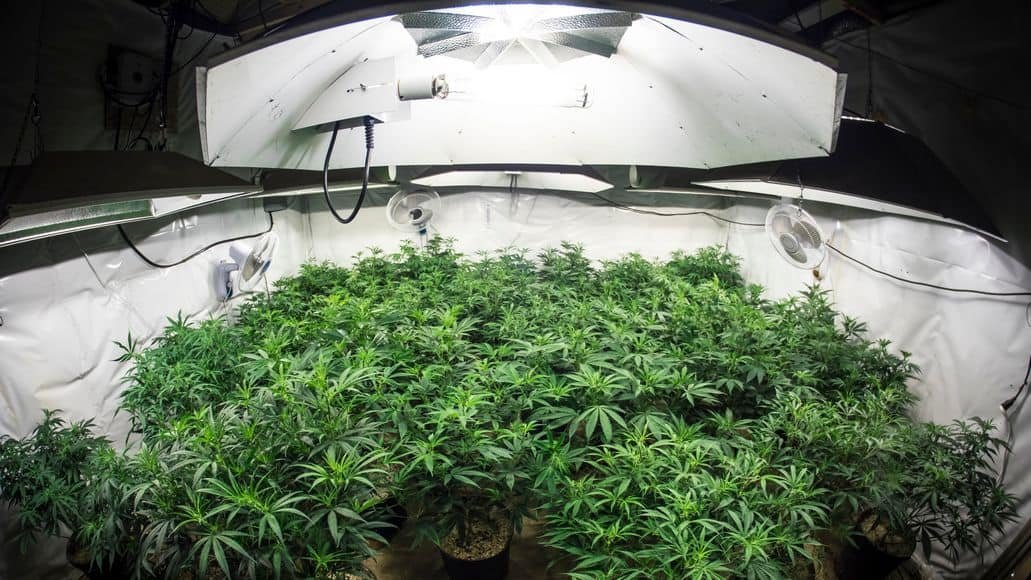
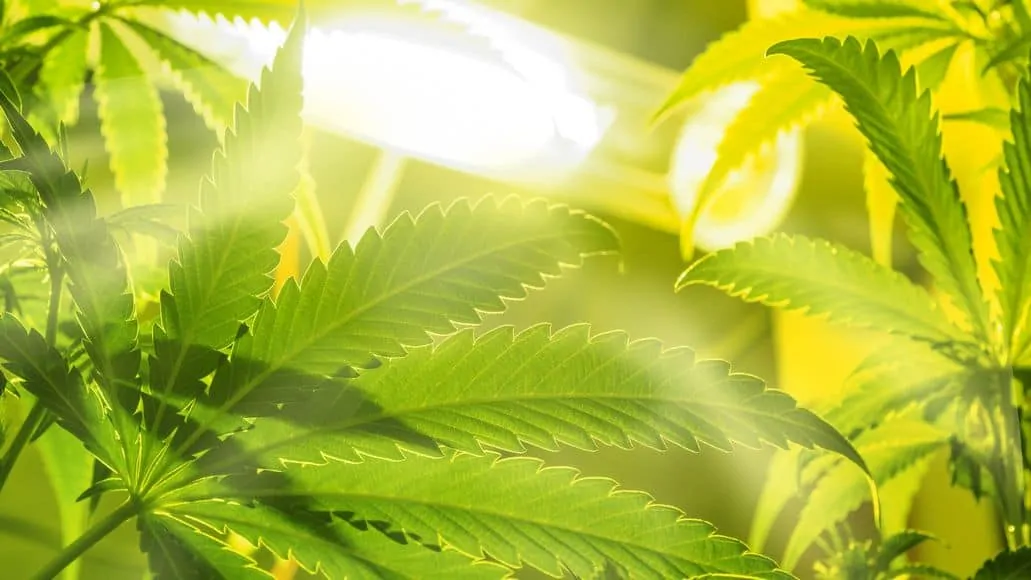
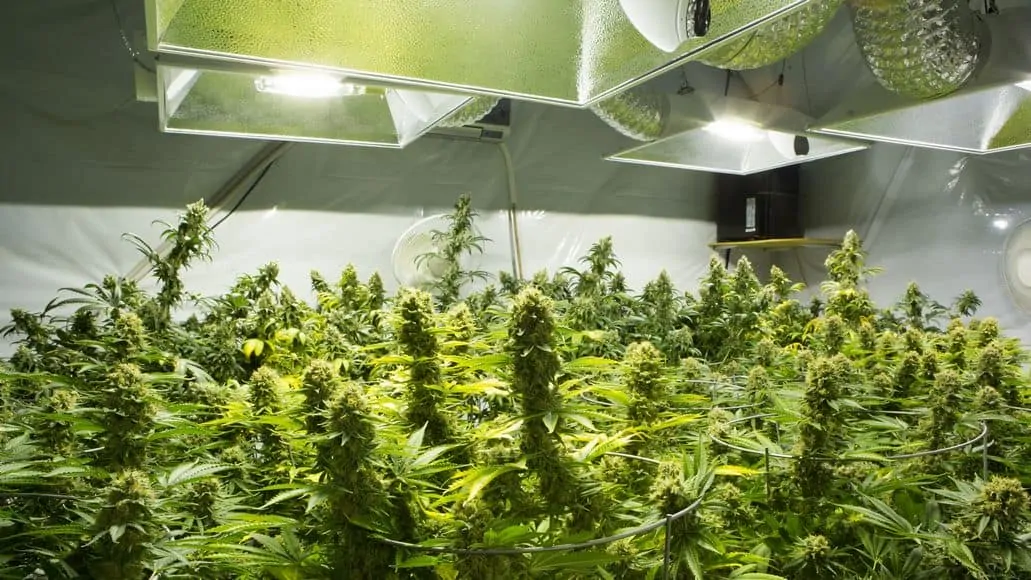
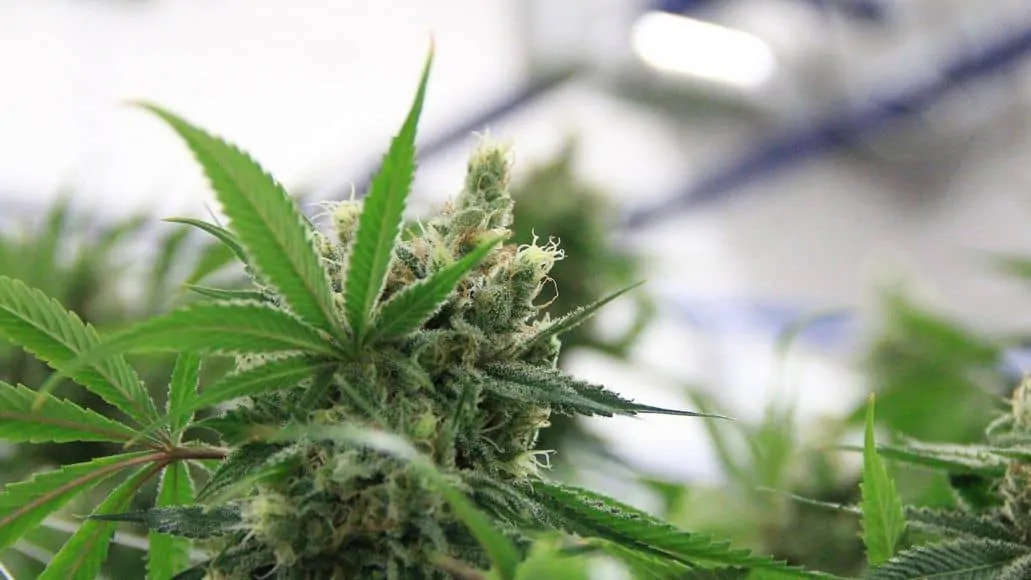
What your saying about timers is incorrect I’m using a oldstyle one from any store it works fine, my leafs are healthy and growth is far superior , I’m full spectrum led cobs adjustable dimmer, is on half during vege on full during bloom my plants are healthy no issues of stress and the end product some amazing “tomato’s”
yeah man i agree with you !!!! who wrote this must be stupid as hell… and hmmm turn off light 6 times a day?!?! wtf !!!! hey dumb fuck it calls timer !!!!!!!!!!!!!!!!!!!!!!!!! but for stupid person there is no help !!! if this dumbo would work for me i would fired him just for retardness!!!!!!!!!!
Currently running 6/2 myself. I had a couple of plants that had a hard start to life and was having trouble with low humidity so thought I’d work with the 6/2 to raise humidity and since the plants were already on a 50/50 if they would be survivors, I thought ‘why not’. The 3 I had in the tent had no issues moving from the 18/6 to the 6/2 – they seemed to thrive better (again, could be because humidity conditions and all improved but…). 1 plant that went in a week after the rest, which has basically been on a native 6/2 (apart from the 24/7 seedling stage) has been thriving beyond belief. All plants have fan leaves on them live I have never seen before on previous grows…you could slap someone out cold with them…they’re massive. Thinking of a transition week of 9/3 (On MH still while setting the SCROG) and then 2 further weeks of transition on 12/12 under HPS or just cold turkey 12/12 HPS.
Running a growdiary on them…https://growdiaries.com/diaries/104781-grow-journal-by-xbrico/week/538237 – this is for the native 6/2 plant and you can see how well its doing! Hopefully the flower transition weeks will go well
i have been running 6/2 for 5 grows now. my plants are much healthier in veg than they were running 18/6. i also did my homework and found documentation that marijuana plants algebraically lower photon usage after 5 and a half hours of constant light and it takes them about an hour and a half to reset for utilizing all the photons again.. as for going to flowering, i go immediately from 6/2 to 12/12 and typically have pistils in 4 or 5 days.
yep i think its awesome 6/2 cos im growing almost 15 years and this was first time i just tried it and i must say wow!!!! plants are super healthy!!! they are 2 or 3 times bigger than i had every time before!!!! so thats my new schedule!!!no doubt about it!!!
same,been growing autos under 6/2 for biut 3 years will never go back to 24/0 or 18/6. grower only😉
There are definitive advantages to 6/2 or 9/3 particularly for home grown sativa dominant plants. Some growers, especially with cameras in their grow rooms, have noticed their plants going to sleep before an 18 hr light cycle is done. Plants used to the light cycles of the equator may only actually need 14 hours of veg, as shorter light cycles are typical of the equator. And so 9/3 or 6/2 may often be more efficient with sativa dominant strains or equatorial genetics. The rest periods also allow the plant to deposit excess sugars into the root zone and feed the soil microbes, something you don’t get at all from the 24 hr light cycle (molasses could be added to water during 24 hr veg cycles to feed soil microbes). Maybe the 24, 20, and 18 hr light cycles are wasting energy for many strains, and maybe the 6 hour straight dark cycle of 18/6 is too long and wasting time as well.
Home sativa growers have also found it easier to force flower sativas using the 11/13 light/dark cycle. It may very well be that the most efficient way to grow an indoor sativa of a manageable size may be a 9/3 veg cycle followed by 11/13 for flower.
Commercial grower in oklahoma been growing at home under 6/2 for 2 yrs and my veg tent is way less work and get massive plants fast in organic soil. The guy that says his leaves are massive is absolutely correct I do no training anymore at home and I carried all this over into my commercial operation and I get pistols in 3-5 days I can’t push cloning commercially back past 3 days or re-veg is to long but at 2-3 days depending on strain I clone under 18/6 for 21 days I do my picks from rooted stock for qualities of good growers and I take those into veg under 6/2 for an additional 49 days around 26”-38” and I got 4’-6’ tall plants 10 days into flower. But the main difference I noticed was with less training of branches and just controlling top of clones to even up canopy is less stress full on plant than using a net and I get way prettier and healthier buds and I get the same weight. I do minimum defoliation I take first fan leaves at main stock 2 weeks before flower, 3 weeks into flower I take all lower bud sites off and remove only the first set of leaves of main branches that have at least 3 nodes if less than 3 it keeps leaf until it goes yellow or I harvest. That right the is the biggest yield make I have seen with my eyes is the more leaf she keeps in flower the better and bigger buds with be through out the plant the bullshit you read about trim to get light down into lower areas is counter productive in theory the bigger the leaves the bigger the. Yes will be remember that and ur golden
This is good to hear from an experienced grower. I’ve been running the gas lamp routine for veg for 6 months with no issues, I do 12 hours on, 5 hours off, 2 on, 5 off. I’m gonna try the 6/2 but I may alter it to 5/3 just to help save some electricity, it’s expensive af in California . I also have flowered at 11 on/13 off for lotsa years with no issues.
I appreciate you sharing your deleaf technique, an old timer 20 plus years ago told me about taking main stem water leafs only like you do. I too have always done the lower thinning around week 3 of flower. I’m also continually relearning that runnin less plants per light is better for each plant as they have more space. I tend to run one plant per square foot but I’m forcing myself again to run 9 per 4×4…
Looking forward to 5/3 trials.
Do you have any pics you can share or guide me to elsewhere?
Cheers, keep up the good work. Lots of good growers in Oklahoma regardless of the major amount of boof and commercial whores that get bad media. I follow some top notch talented growers over that way.
✌️
It may not be stressful when switching to 12/12..
you look at it as a 24-hour cycle… and, when you switch you start with the 10+ hour dark cycle (12 is what ppl use, but 10 is the required length of darkness most photoperiod plants need.
So, as long as you give it 10 or 12 hours of uninterrupted darkness, it will not have any impact on the hormonal balance than normal. 11 or 12 hours of darkness just covers the weird-o plants. As long as you provide same DLI over 12 or 13 hours when lights are on, it really won’t matter which you use.
dark-dependent plants.. think they revised vocab on that in last 30 years? that’s the term i was taught in biology class decades ago.
Why? when it is dark it starts producing a different hormone. If those levels reach a certain point after 10 or more hours of darkness uninterrupted, it flips a switch in the plant. it is a hormonal feedback system — we have these in our bodies too… birtch control avoids a negative feedback response that causes an ovary to be penetrable… as long as Pg stays high enough, can’t get pregnant. This is no different…
So, ignoring any effect of circadian rhythm, changing light schedule in vege should have very little impact. as long as you provide same DLI should be fine.
I wouldn’t do this unless you have a specific reason, though. if temps are too high, this will help, but before 6 hours it’ll hit that peak temp, i bet.. so how much help would it provide? seems like an oversophistication for no reason.
I’m doing 6 seconds on and 2 seconds off.